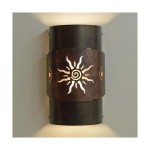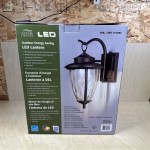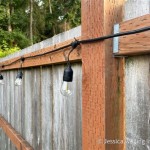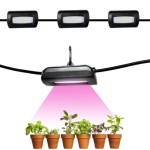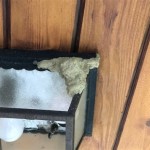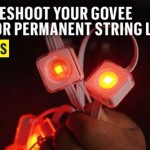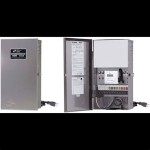Types of Polycarbonate Outdoor Lighting Materials: Charts and Graphs
Outdoor lighting plays a crucial role in enhancing the aesthetics, security, and functionality of exterior spaces. The selection of appropriate materials for outdoor lighting fixtures is paramount, impacting durability, performance, and overall lifespan. Polycarbonate, a thermoplastic polymer, has emerged as a popular choice for outdoor lighting applications due to its advantageous properties. This article provides a comprehensive overview of various types of polycarbonate used in outdoor lighting, supported by charts and graphs to illustrate key characteristics and performance metrics.
Polycarbonate resin is prized for its high impact resistance, exceptional clarity, and weatherability. It commonly replaces glass and acrylic in applications where durability and safety are paramount. Unlike glass, polycarbonate is shatterproof, reducing the risk of injury from breakage. Compared to acrylic, polycarbonate offers superior impact resistance and a broader operating temperature range. The versatility of polycarbonate allows it to be molded into complex shapes, making it suitable for a wide array of outdoor lighting designs.
Several factors influence the selection of specific polycarbonate grades for outdoor lighting. These include the intensity of ultraviolet (UV) radiation exposure, temperature fluctuations, chemical resistance requirements, and desired optical properties. Manufacturers offer specialized polycarbonate formulations tailored to meet the demands of different outdoor environments.
Understanding Polycarbonate Grades for Outdoor Lighting
Different polycarbonate grades exhibit varying levels of performance in outdoor lighting applications. The selection of the appropriate grade is crucial for ensuring the longevity and reliability of the lighting fixture. Some common grades include standard polycarbonate, UV-stabilized polycarbonate, and flame-retardant polycarbonate. Each offers a unique set of properties, making them suitable for different scenarios.
Standard Polycarbonate: This grade is the most basic form of polycarbonate and offers good impact resistance and clarity. However, it is susceptible to degradation from prolonged exposure to UV radiation. Therefore, standard polycarbonate is typically used in applications where UV exposure is minimal or where the material is coated with a UV protectant.
UV-Stabilized Polycarbonate: This grade incorporates additives that absorb or reflect UV radiation, thereby preventing discoloration, cracking, and loss of mechanical properties. UV-stabilized polycarbonate is the preferred choice for outdoor lighting fixtures that are directly exposed to sunlight. Different levels of UV stabilization are available, depending on the severity of the UV environment. Regions with high levels of solar radiation require polycarbonate with higher UV stabilization levels.
Flame-Retardant Polycarbonate: This grade contains additives that inhibit combustion and reduce the spread of flames. Flame-retardant polycarbonate is used in outdoor lighting applications where fire safety is a primary concern, such as in commercial or industrial settings. These materials meet specific flammability standards, such as UL94, which classifies materials based on their burning characteristics.
The following chart illustrates the relative performance of these three polycarbonate grades in key areas:

This chart visually represents the differences in UV resistance, impact resistance, flammability, and clarity among the three polycarbonate grades. It helps in understanding the tradeoffs involved in selecting a particular grade for a given application.
Properties and Performance Metrics of Polycarbonate
Several key properties and performance metrics define the suitability of polycarbonate for outdoor lighting. These include impact strength, light transmission, thermal stability, and chemical resistance. Understanding these properties is essential for selecting the right polycarbonate material for specific applications.
Impact Strength: Polycarbonate is renowned for its exceptional impact strength, which is significantly higher than that of glass or acrylic. This property makes it highly resistant to damage from impacts, such as those caused by hailstones, vandals, or accidental contact. Impact strength is typically measured using tests such as the Izod impact test and the Charpy impact test.
Light Transmission: Polycarbonate exhibits high light transmission properties, allowing a significant amount of light to pass through the material. This is important for outdoor lighting fixtures where efficient light output is desired. Light transmission is typically measured as a percentage of light that passes through a given thickness of the material. Special grades of polycarbonate are available that offer even higher light transmission for applications where maximum brightness is required.
Thermal Stability: Polycarbonate has good thermal stability, meaning it can withstand a wide range of temperatures without significant changes in its properties. This is crucial for outdoor lighting fixtures that are exposed to varying weather conditions. The operating temperature range of polycarbonate typically extends from -40°C to 120°C, although this can vary depending on the specific grade. Different formulations of polycarbonate are tailored to withstand extreme hot or cold temperatures.
Chemical Resistance: Polycarbonate exhibits good resistance to a wide range of chemicals, including acids, alkalis, and solvents. However, it is susceptible to attack by certain chemicals, such as aromatic hydrocarbons and chlorinated solvents. The chemical resistance of polycarbonate is an important consideration in outdoor lighting applications where the fixture may be exposed to harsh chemicals or cleaning agents.
The graph below illustrates the relationship between temperature and impact strength for a typical polycarbonate grade:

As temperature decreases, the impact strength of polycarbonate typically decreases. This graph highlights the importance of considering the operating temperature range when selecting polycarbonate for outdoor lighting applications, especially in regions with extreme weather conditions.
Application-Specific Polycarbonate Considerations
The specific requirements of the outdoor lighting application dictate the most appropriate polycarbonate grade to choose. Different applications have different needs, and the selection should reflect these variances. For example, coastal environments require corrosion-resistant materials, while high-traffic areas require vandal-resistant materials.
Coastal Environments: Outdoor lighting fixtures in coastal environments are exposed to salt spray and high humidity, which can accelerate corrosion. In such cases, polycarbonate with enhanced chemical resistance and UV stabilization is recommended. Additionally, the hardware used in the fixture should be made of corrosion-resistant materials, such as stainless steel or aluminum.
High-Traffic Areas: Outdoor lighting fixtures in high-traffic areas, such as parks and pedestrian walkways, are susceptible to vandalism and accidental damage. In these areas, polycarbonate with high impact strength and a tamper-resistant design is essential. Consider using thicker polycarbonate sheets or incorporating reinforcement features to enhance durability.
Street Lighting: Street lighting fixtures require high light transmission, UV stability, and thermal stability. Polycarbonate is often used in street lighting applications due to its ability to withstand harsh weather conditions and maintain its optical properties over time. Light transmission considerations are paramount, and specific grades should be selected to maximize light output.
Architectural Lighting: Architectural lighting fixtures are often designed to enhance the aesthetic appeal of buildings and landscapes. In these applications, the optical clarity and design flexibility of polycarbonate are key considerations. Polycarbonate can be molded into complex shapes and can be tinted or colored to create desired lighting effects. UV stabilized grades are essential to preserve the aesthetic qualities of the lighting fixture over its lifespan.
The table below summarizes the recommended polycarbonate grades for different outdoor lighting applications:

This table provides guidance on selecting the appropriate polycarbonate grade based on the specific requirements of different outdoor lighting applications. It serves as a helpful reference for designers and manufacturers considering polycarbonate as a material for their outdoor lighting fixtures.
The selection of polycarbonate for outdoor lighting applications is a multifaceted process that requires careful consideration of various factors, including the environment, application requirements, and performance characteristics of different polycarbonate grades. By understanding the properties and limitations of different polycarbonate materials, designers and manufacturers can ensure the durability, performance, and longevity of their outdoor lighting fixtures.

Full Article Assessment Of Polycarbonate Material As A Sustainable Substitute For Glazing In Hot Climates

Plexiglass Sheets Fiberglass Uhmw Polycarbonate Engineering Plastics Infrared And Ultraviolet Transmission In Acrylic Makrolon Sheet

Duroplastic Profiled Polycarbonate

Buy Polycarbonate Sheets Sheet Roofing4us

Polycarbonate Thickness Chart Selection And Installation Guide

Polycarbonate Thickness Chart Selection And Installation Guide

Polycarbonate Thickness Chart Selection And Installation Guide

A Guide To Types Of Polycarbonate Sheet

Pc Material Characterization Lorric

Polycarbonate Thickness Chart Selection And Installation Guide
Related Posts

